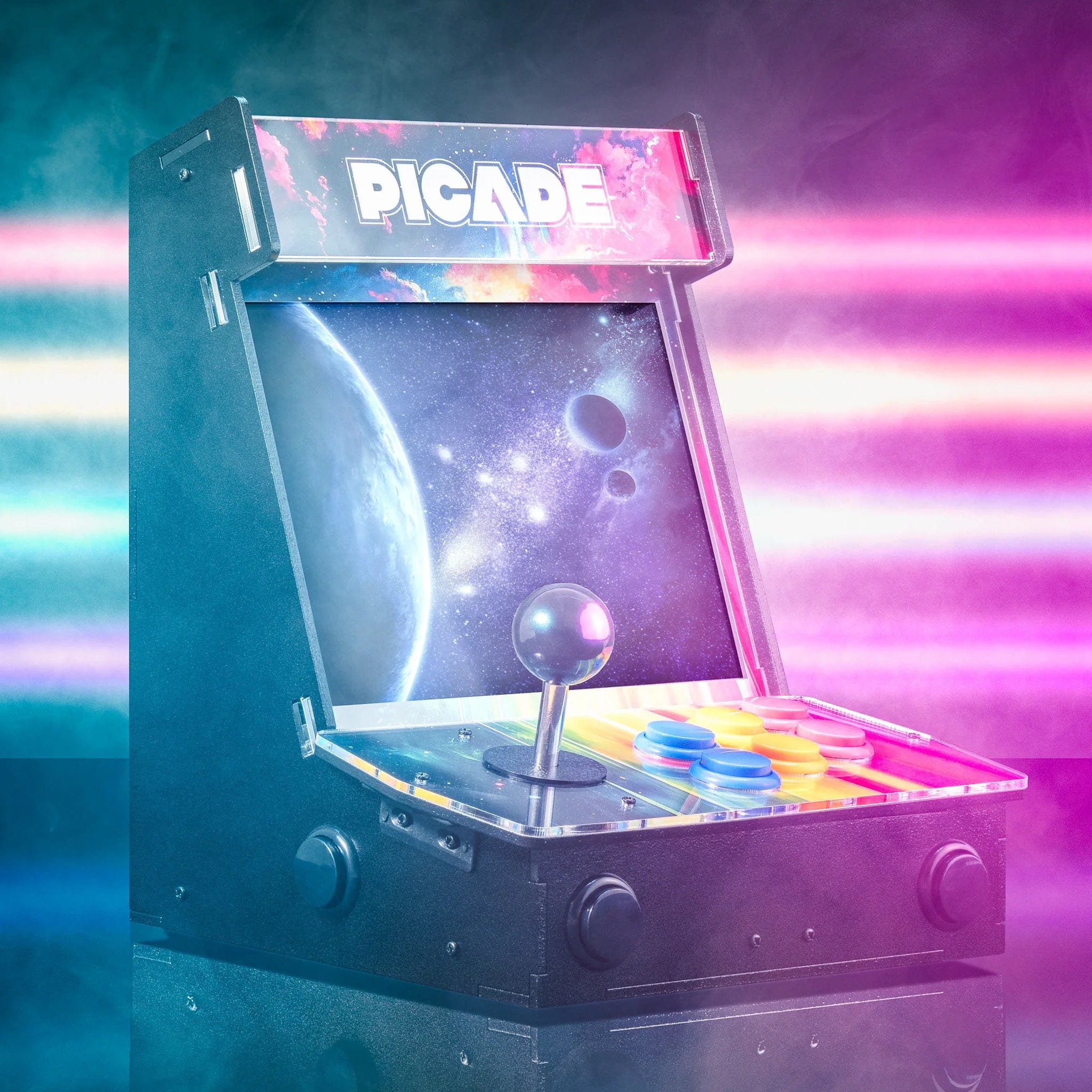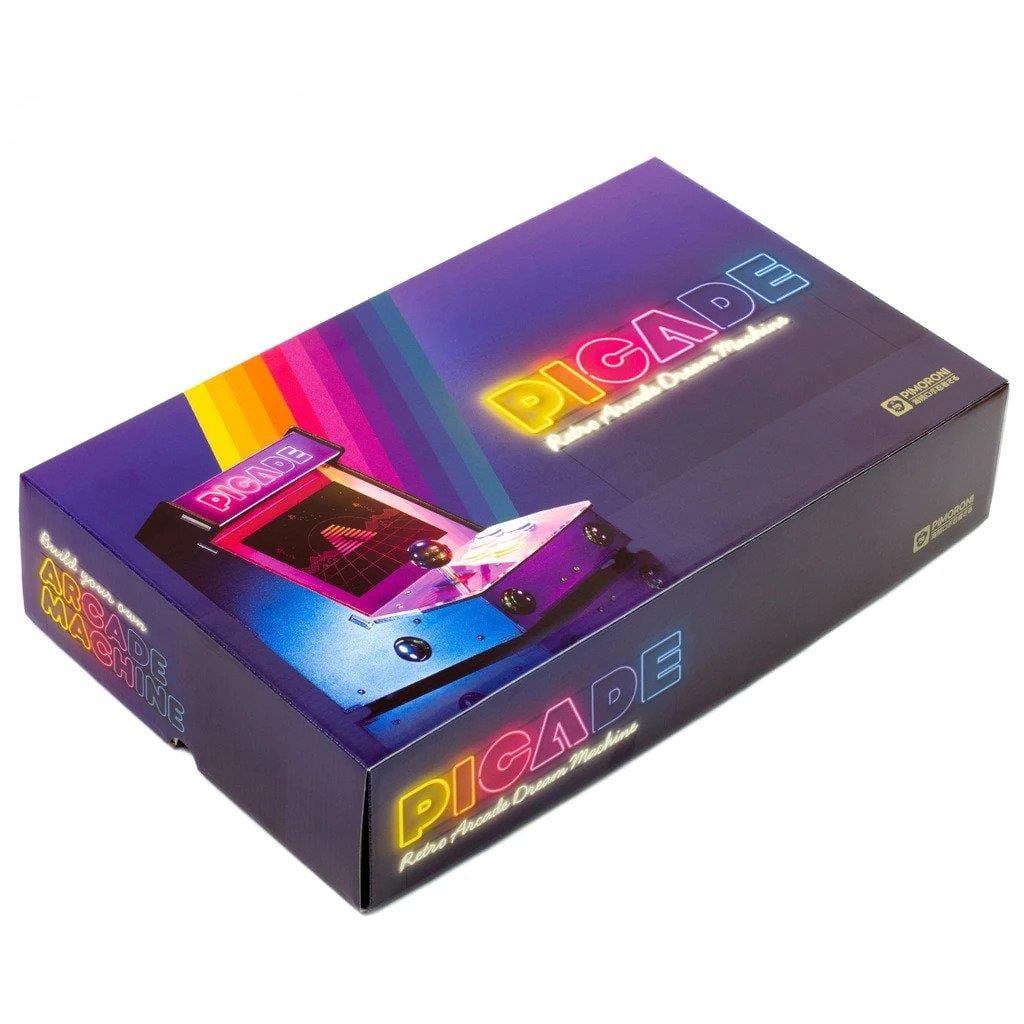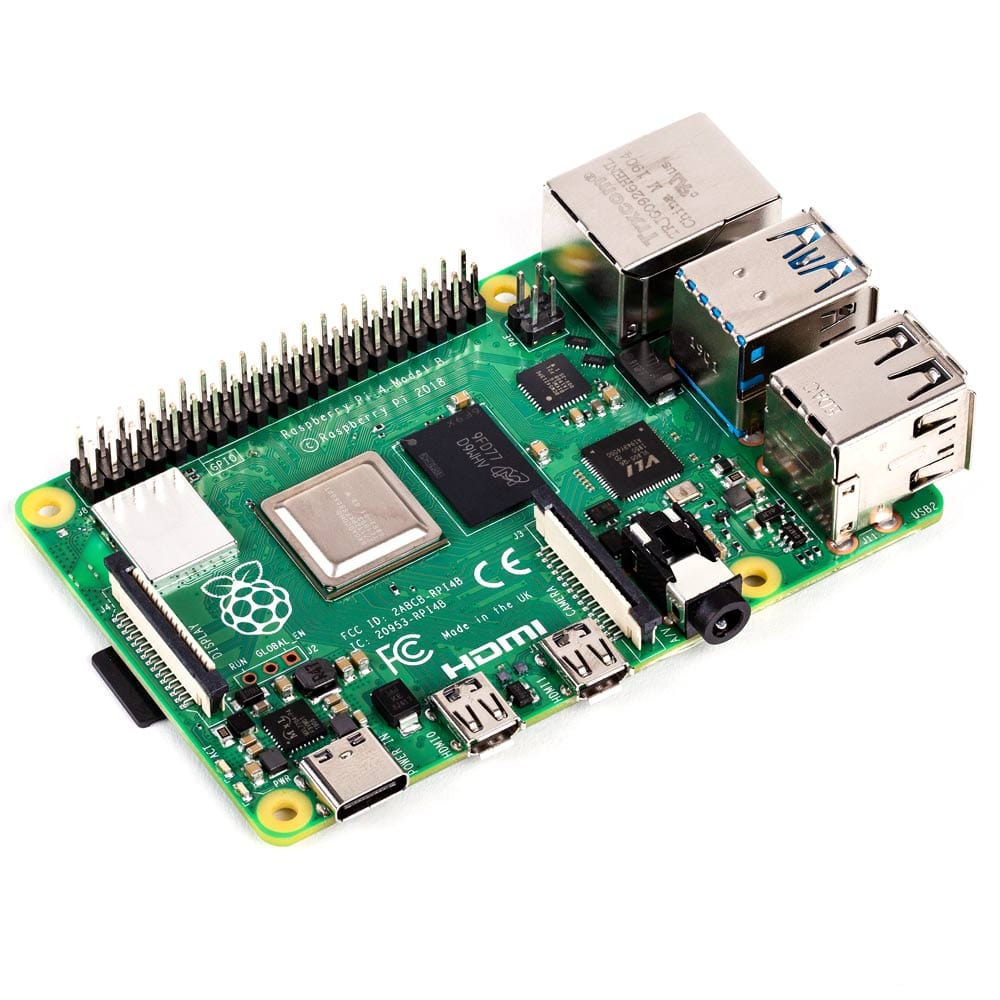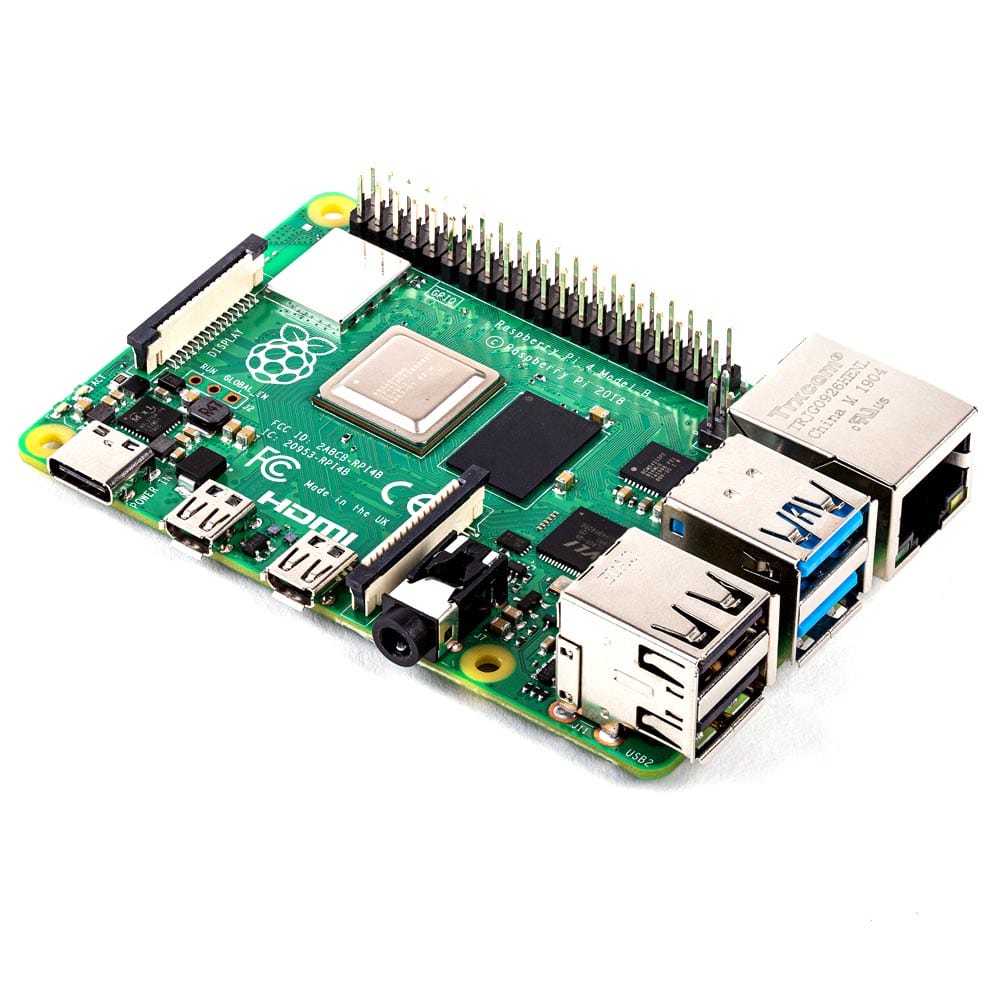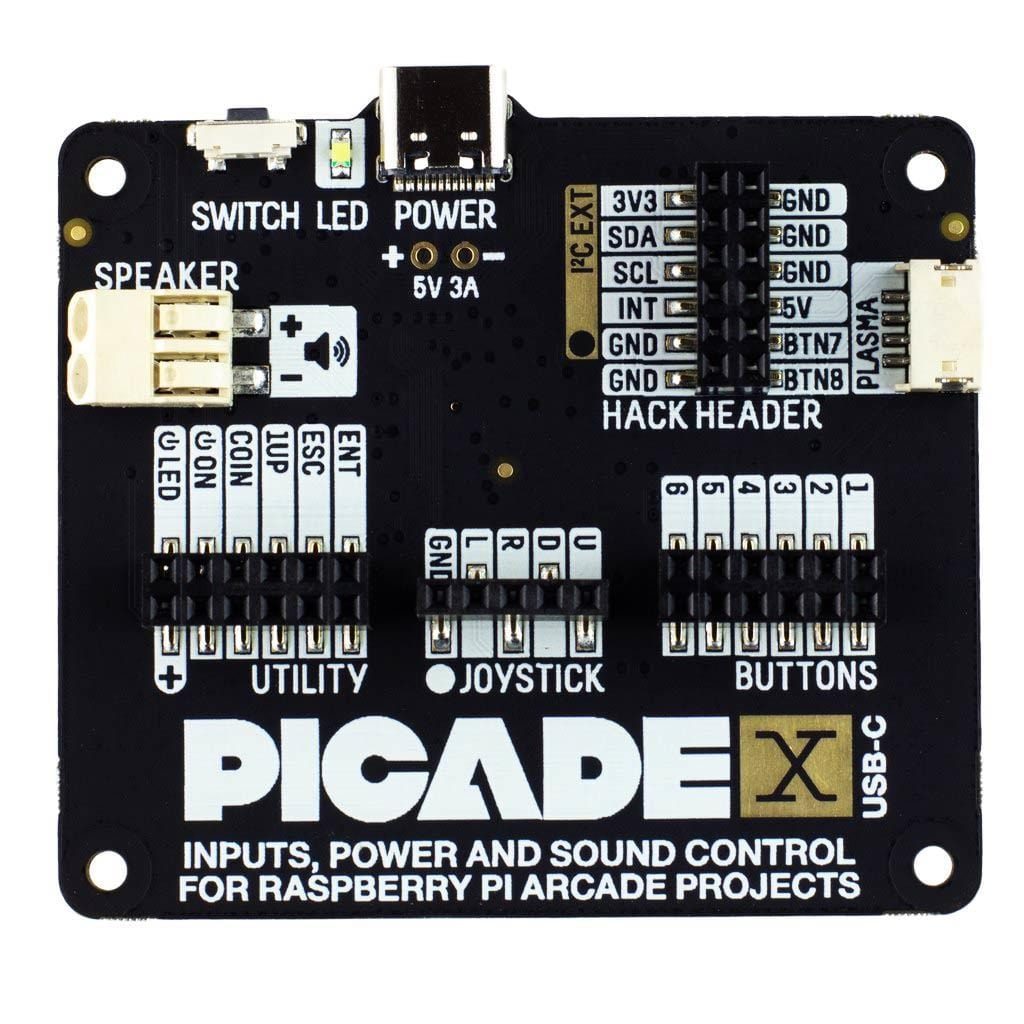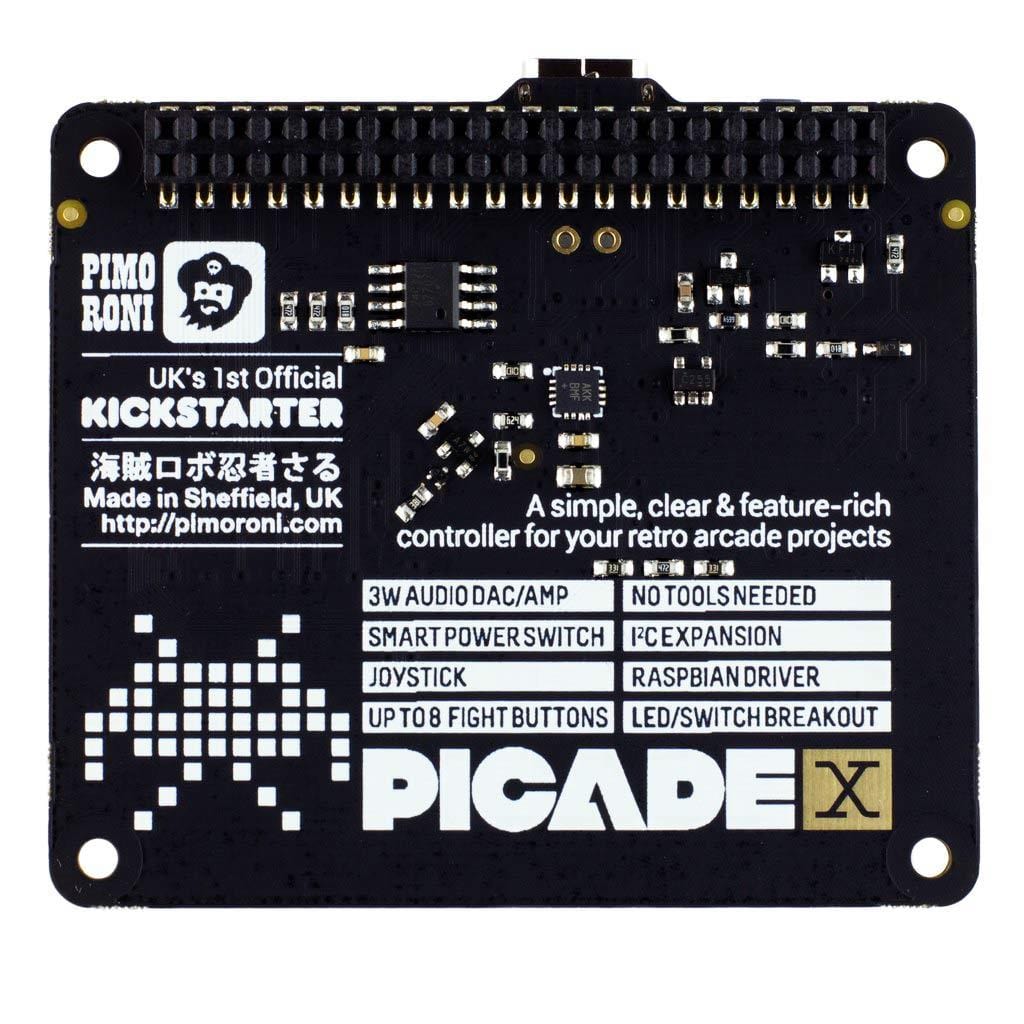![Picade - Raspberry Pi Arcade Machine (8" display) [Discontinued] by Pimoroni - The Pi Hut](http://thepihut.com/cdn/shop/products/picade-raspberry-pi-arcade-machine-8-display-pimoroni-pim468-23174261997763.jpg?v=1646298372&width=1024)
![Picade - Raspberry Pi Arcade Machine (8" display) [Discontinued] by Pimoroni - The Pi Hut](http://thepihut.com/cdn/shop/products/picade-raspberry-pi-arcade-machine-8-display-pimoroni-pim468-3740609511486.jpg?v=1646298374&width=1024)
![Picade - Raspberry Pi Arcade Machine (8" display) [Discontinued] by Pimoroni - The Pi Hut](http://thepihut.com/cdn/shop/products/picade-raspberry-pi-arcade-machine-8-display-pimoroni-pim468-3740609478718.jpg?v=1646298377&width=1024)
![Picade - Raspberry Pi Arcade Machine (8" display) [Discontinued] by Pimoroni - The Pi Hut](http://thepihut.com/cdn/shop/products/picade-raspberry-pi-arcade-machine-8-display-pimoroni-pim468-3740609609790.jpg?v=1646298380&width=1024)
![Picade - Raspberry Pi Arcade Machine (8" display) [Discontinued] by Pimoroni - The Pi Hut](http://thepihut.com/cdn/shop/products/picade-raspberry-pi-arcade-machine-8-display-pimoroni-pim468-3740610789438.jpg?v=1646298003&width=1024)
![Picade - Raspberry Pi Arcade Machine (8" display) [Discontinued] by Pimoroni - The Pi Hut](http://thepihut.com/cdn/shop/products/picade-raspberry-pi-arcade-machine-8-display-pimoroni-pim468-3740610822206.jpg?v=1646298005&width=1024)
![Picade - Raspberry Pi Arcade Machine (8" display) [Discontinued] by Pimoroni - The Pi Hut](http://thepihut.com/cdn/shop/products/picade-raspberry-pi-arcade-machine-8-display-pimoroni-pim468-3740610854974.jpg?v=1646298010&width=1024)
Login / Signup
Cart
Your cart is empty
![Picade - Raspberry Pi Arcade Machine (8" display) [Discontinued] by Pimoroni - The Pi Hut](http://thepihut.com/cdn/shop/products/picade-raspberry-pi-arcade-machine-8-display-pimoroni-pim468-23174261997763_1000x.jpg?v=1646298372)
![Picade - Raspberry Pi Arcade Machine (8" display) [Discontinued] by Pimoroni - The Pi Hut](http://thepihut.com/cdn/shop/products/picade-raspberry-pi-arcade-machine-8-display-pimoroni-pim468-3740609511486_1000x.jpg?v=1646298374)
![Picade - Raspberry Pi Arcade Machine (8" display) [Discontinued] by Pimoroni - The Pi Hut](http://thepihut.com/cdn/shop/products/picade-raspberry-pi-arcade-machine-8-display-pimoroni-pim468-3740609478718_1000x.jpg?v=1646298377)
![Picade - Raspberry Pi Arcade Machine (8" display) [Discontinued] by Pimoroni - The Pi Hut](http://thepihut.com/cdn/shop/products/picade-raspberry-pi-arcade-machine-8-display-pimoroni-pim468-3740609609790_1000x.jpg?v=1646298380)
![Picade - Raspberry Pi Arcade Machine (8" display) [Discontinued] by Pimoroni - The Pi Hut](http://thepihut.com/cdn/shop/products/picade-raspberry-pi-arcade-machine-8-display-pimoroni-pim468-3740610789438_1000x.jpg?v=1646298003)
![Picade - Raspberry Pi Arcade Machine (8" display) [Discontinued] by Pimoroni - The Pi Hut](http://thepihut.com/cdn/shop/products/picade-raspberry-pi-arcade-machine-8-display-pimoroni-pim468-3740610822206_1000x.jpg?v=1646298005)
![Picade - Raspberry Pi Arcade Machine (8" display) [Discontinued] by Pimoroni - The Pi Hut](http://thepihut.com/cdn/shop/products/picade-raspberry-pi-arcade-machine-8-display-pimoroni-pim468-3740610854974_1000x.jpg?v=1646298010)
This is the 8" Picade - we also stock the 10" version.
The ultimate desktop retro arcade machine! Picade is a Raspberry Pi-powered mini arcade that you build yourself, with authentic arcade controls, a high resolution 4:3 display that's ideal for retro gaming, and a punchy speaker to hear those 8-bit game soundtracks at their best!
Picade is now Raspberry Pi 4 compatible and includes a new USB-C version of Picade X HAT!
The all-new Picade has been completely redesigned, from the inside out! There's new artwork, a new display and display driver board, dedicated power button, an all-new Picade X HAT, easier wiring, easier access to the interior of the cabinet, beautiful new packaging, a bunch of extra goodies (stickers and an enamel Picade pin), and a gorgeous Picade poster and assembly instructions.
Picade comes in kit form, and it'll take around two to three hours to build. The cabinet is made from powder-coated MDF, giving it a quality look and feel similar to a full-size arcade. All you'll need to add is a Raspberry Pi, power supply, and micro-SD card.
You can watch the Picade ad below!
The cabinet is more compact, so it fits more neatly on your desk, but has a higher resolution 8" display (1024x768). The display is driven by a new Pimoroni-designed and manufactured driver board, with keypad controls. It's an IPS panel, so it looks great from any viewing angle!
The all-new Picade X HAT is packed full of useful features. We've moved from more fiddly screw terminals to simple DuPont connectors that just push in, and the speaker terminals are the same easy push-fit connectors that we use on pHAT BEAT.
There's dedicated power management on-board Picade X HAT; just plug your micro-USB power supply into the HAT and it'll power your Pi through its pins. The power button connected to the HAT means that once your Pi is safely shutdown, the power will be cut completely to the Pi. A simple press of the power button will boot your Picade up again.
The new buttons in Picade are lower profile, and the new joystick has a single connector rather than the eight spade connectors on our previous Picade joystick.
A gorgeous new neon-look Picade logo on the marquee, and rainbow stripes on the console and screen-surround, evoke classic consoles, as do the assembly instructions and poster.
We recommend the RetroPie operating system for your Picade. You can download it from the RetroPie website and then burn it to a micro-SD card with Etcher.
Connect a USB keyboard to your Pi, and connect to Wi-Fi in the RetroPie menu. Press F4 to exit to the terminal and then type curl https://get.pimoroni.com/picadehat | bash to run the Picade HAT installer.
Reboot your Pi, if it doesn't prompt you to. Press the "Alt" key on your keyboard and then select "Configure input" to configure your Picade's controls. You'll find that the sound and power button should both be working now too!
If your Picade display doesn't show anything when you first power it up, then it could be because the HDMI display is not being detected by the Raspberry Pi. This can happen because power isn't supplied to the USB ports on the Raspberry Pi for the first few seconds of booting. The solution is to edit the /boot/config.txt file on your RetroPie SD card, and add hdmi_force_hotplug=1 on a new line at the bottom of the file.
If you'd like to design your own artwork for your Picade, then we've made a handy PDF that has the outlines and dimensions of the marquee, screen shim, and console. You can download it from the Picade HAT GitHub repo here.
![Picade - Raspberry Pi Arcade Machine (8" display) [Discontinued] by Pimoroni - The Pi Hut](http://thepihut.com/cdn/shop/products/picade-raspberry-pi-arcade-machine-8-display-pimoroni-pim468-23174261997763.jpg?v=1646298372&width=1024)
![Picade - Raspberry Pi Arcade Machine (8" display) [Discontinued] by Pimoroni - The Pi Hut](http://thepihut.com/cdn/shop/products/picade-raspberry-pi-arcade-machine-8-display-pimoroni-pim468-3740609511486.jpg?v=1646298374&width=1024)
![Picade - Raspberry Pi Arcade Machine (8" display) [Discontinued] by Pimoroni - The Pi Hut](http://thepihut.com/cdn/shop/products/picade-raspberry-pi-arcade-machine-8-display-pimoroni-pim468-3740609478718.jpg?v=1646298377&width=1024)
![Picade - Raspberry Pi Arcade Machine (8" display) [Discontinued] by Pimoroni - The Pi Hut](http://thepihut.com/cdn/shop/products/picade-raspberry-pi-arcade-machine-8-display-pimoroni-pim468-3740609609790.jpg?v=1646298380&width=1024)
![Picade - Raspberry Pi Arcade Machine (8" display) [Discontinued] by Pimoroni - The Pi Hut](http://thepihut.com/cdn/shop/products/picade-raspberry-pi-arcade-machine-8-display-pimoroni-pim468-3740610789438.jpg?v=1646298003&width=1024)
![Picade - Raspberry Pi Arcade Machine (8" display) [Discontinued] by Pimoroni - The Pi Hut](http://thepihut.com/cdn/shop/products/picade-raspberry-pi-arcade-machine-8-display-pimoroni-pim468-3740610822206.jpg?v=1646298005&width=1024)
![Picade - Raspberry Pi Arcade Machine (8" display) [Discontinued] by Pimoroni - The Pi Hut](http://thepihut.com/cdn/shop/products/picade-raspberry-pi-arcade-machine-8-display-pimoroni-pim468-3740610854974.jpg?v=1646298010&width=1024)

